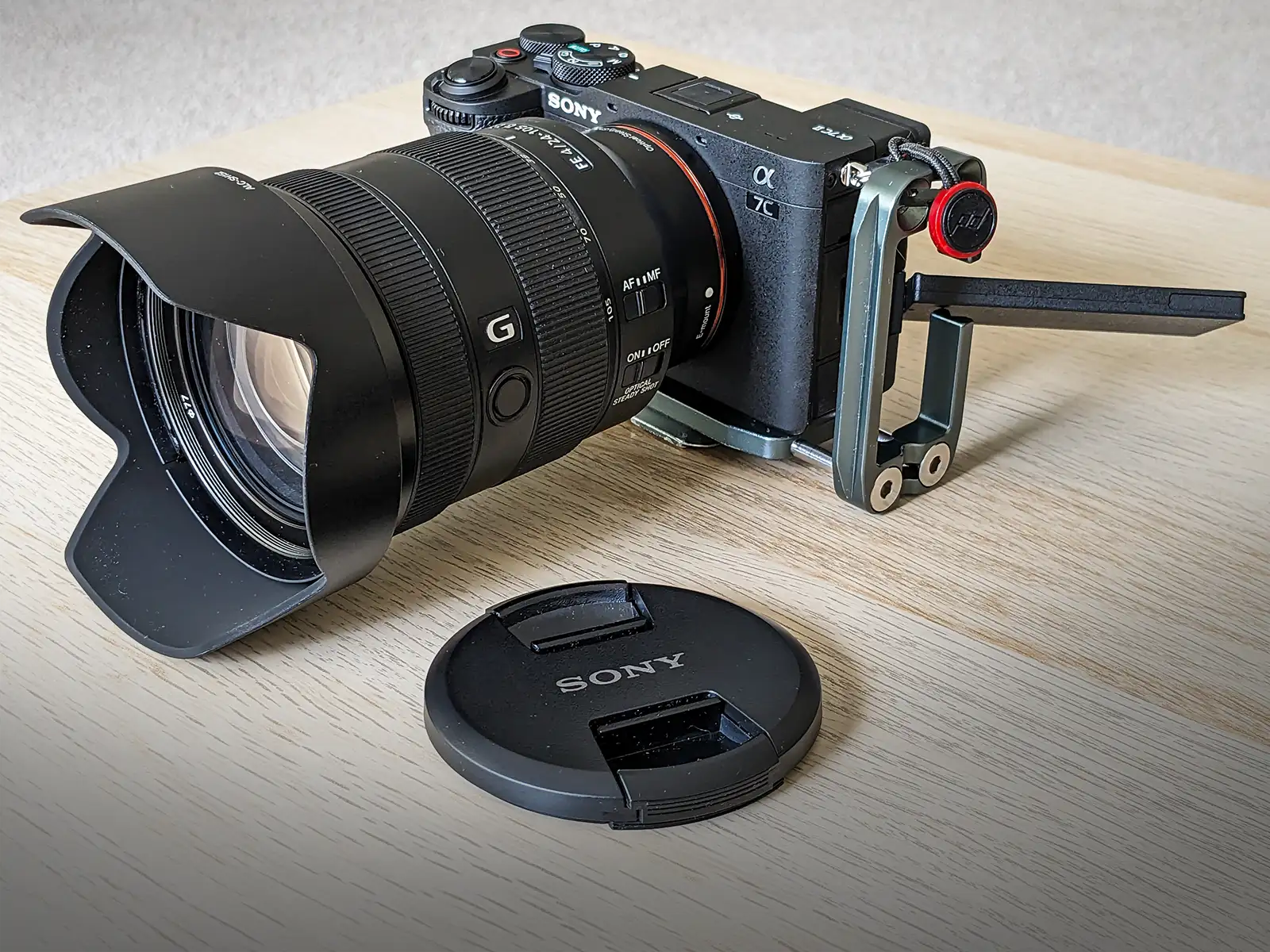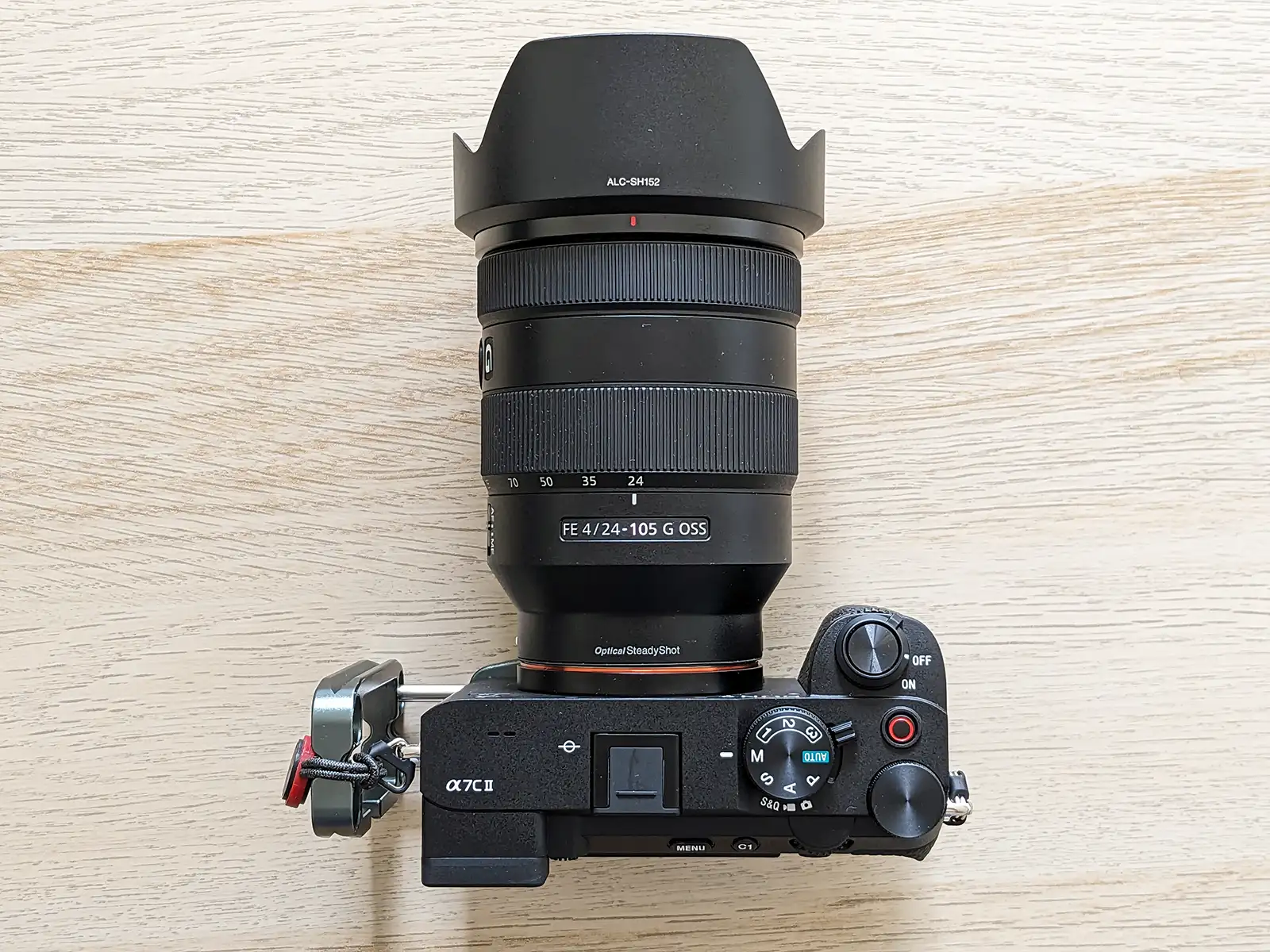How and why I moved from Fuji to the Sony full frame system
For the last four years I’ve been using a Fujifilm X-T3 as my main camera. Years ago I switched to Fuji from a Canon full frame DSLR. And recently I’ve moved to a Sony system. Here are my reasons:

When I switched from a full frame Canon DSLR to a mirrorless APSC Fuji system, the X-T3 offered many benefits: it was smaller (the body and the lenses), lighter and more importantly the image quality was even better.
With my recent move to Sony I followed a similar reasoning. However there was a lot of deliberation.
The problem
My old X-T3 started showing its age and the internal battery became less and less reliable. From draining a full battery in a couple of days to loosing settings it quickly got worse. For those who don’t know, the camera actually has 2 batteries: the one we are all familiar with that can be removed and charges and another one which we never see, an internal battery that’s used to keep all the settings and time up to date.
The internal battery is charged automatically from the rechargeable one. Usually nobody notices its existence until it gets old and can’t keep its charge anymore. In this case the removable battery does all the power lifting and is discharged very quickly. Unfortunately the internal battery can’t be replaced and it’s a sign a new camera body is needed.
I’ve read that this seemed to be a common problem with X-T3 and even X-T4 so I couldn’t trust that the new X-T5 would be immune to this.
The X-T5 however looked really good at first, very similar to the X-T3 externally but with lots of improvements like IBIS (which X-T3 doesn’t have) better sensor and some autofocus improvements.
I also looked at other full frame bodies: Sony and Canon had some of the best tech and at reasonable prices. And here is one of the main issues I had with an X-T5, the price.
I realized that for a very similar price I could get a full frame camera. A bigger sensor offers better image quality and more flexibility in post processing. On the other hand I didn’t want a larger body or lenses.
I mainly use the camera for landscape, nature and travel photography. I hike with it and with the lenses, travel and pretty much take my gear wherever I go. So one of the most important requirements was to keep the weight low and the size small but the image quality high (the usual trade-off). Here is where the new Sony A7CII entered the challenge.
The newly released A7CII turns out to be even smaller than the X-T5 (or other X-T bodies). By adopting the rangefinder design, it is more compact and it’s even lighter (513g vs 557g).

So I was intrigued by this little beast. A7CII offered better image quality, smaller size and slightly lighter weight. The IBIS seemed to be the same 7 stops. Great and latest AI powered autofocus which I wouldn’t use that often but it’s great to have anyway. And of course the incredible dynamic range which is always useful in landscape photography. So what were the downsides?
| Camera | X-T5 | A7CII |
|---|---|---|
| IBIS | 7 stops | 7 stops |
| Weight | 557g | 514g |
| Size | 130 x 91 x 64 mm | 124 x 71 x 63 mm |
| Dynamic Range | 13stops | 15 stops |
| Autofocus | some AI subject detection | latest AI tech, very good |
| EVF | 3.69M dots | 2.36M dots 0.70x |
| Touch screen | 1.84 tilt-type | 1.03M fully-articulated touchscreen |
| Sensor resolution | 40.2MP | 33MP |
For one, buying into a new system meant the lenses had to be replaced. And full frame lenses could be heavy.
Along with the Fujifilm X-T3 body I owned 3 Fujinon lenses: 10-24 f4 (the old version), 16-80 f4 and 70-300 f4-5.6 and a Samyang 2.0 f2 for some very rare astrophotography. Moving to a new system meant getting rid of all the lenses and buying new ones.
I did a lot of research on what lenses were available for the Sony system and how they compared to the ones I had. I was pleasantly surprised by how many third party lenses were available and overwhelmed by all the options.
On one side there are excellent but expensive native Sony lenses. On the other side there are cheaper but also good quality wise alternatives from Sigma and Tamron and even cheaper ones from Samyang and Viltrox. Some of these brands offer different trade-offs, for example a lot of the Tamron lenses have no image stabilization, which also makes them lighter and cheaper.
This was also a good moment to step back and find out what were my most used lenses and focal lengths.
For traveling and hiking a wide range zoom is very useful and covers most of the use cases, so something like 24-70 or 24-105 is great. I occasionally use wide angle lenses and usually at the widest end, so the wide angle lens could be a prime lens. For telephoto shots I had a lot of reach with the 70-300 + 1.4x (which is ~630mm full frame equivalent) but I noticed that I only used it very rarely for some wildlife photos and my most used range was up to ~300mm full frame equivalent.
Widge angle lenses
So in the end my first EF lens ended up being the Sony 24-105 f4. This lens has an incredibly useful range and it’s one of the sharpest zoom lenses out there. As for the wide angle and telephoto lenses I’m still looking but meanwhile I’ve made these tables with some of the available options selecting the most reasonable lenses for me based on the weight / price and needs:
| Lens | Weight | Price | Reviews | |
|---|---|---|---|---|
| Sony FE 16-35mm F4 G PZ | 353g | $$ | C. Frost | |
| Sony FE 14mm F1.8 GM | 460g | $$ | C. Frost | No front filters |
| Samyang AF 18mm f/2.8 | 145g | $ | C. Frost | |
| Samyang AF 14mm f/2.8 | 505g | $+ | C. Frost | |
| Tamron 17-28mm f/2.8 Di III | 420g | $$- | D. Abbott | |
| Viltrox AF 16mm f/1.8 | 550g | $$ | D. Abbott |
Telephoto lenses
As for the telephoto this is a similar story. There are so many amazing options but one of the most intriguing lens I’m look to get my hands on is the Sony 70-200mm Macro f4 G OSS II. This lens even though it only goes to 200mm can take a teleconverter, extending the useful range. It’s very light, small and versatile. The added macro capability is great for intimate landscapes. Some of the other options I’ve considered are:
| Lens | Weight | Price | Reviews | |
|---|---|---|---|---|
| Sony 70-200 f4 macro G II | 794g | $$+ | PetaPixel | Can take 1.4x and 2.0x teleconverters |
| Sony 100-400 G Master | 1395g | $$$ | C. Frost | |
| Sigma 100-400 | 1140g | $+ | D. Abbott | |
| Tamron 70-300 | 544g | $ | D. Abbott | No image stabilization |
| Tamron 50-400 | 1155g | $$ | C. Frost | |
A7CII - the screen and the EVF
Some of the criticism I’ve found while doing my research about the A7CII was that the screen and the EVF were not as great and the competition. On paper this is true, however I found them to be of excellent quality and using both the EVF and the touch screen is a pleasure.
Conclusion
Overall my reasons for choosing Sony full frame over staying with a Fuji APSC system can be summarized as following:
- Fuji APSC is expensive compared to the full frame bodies that I can get.
- Full frame sensors have higher image quality and dynamic range (even though Fuji’s sensor is pretty amazing).
- All the innovation and latest tech happen in the full frame sensors. Seems like Fuji’s APSC sensor reached its limit and Fuji is mostly focusing on their GFX system.
- Adding to the above point, seems like the Sony full frame system is more future proof.
- Sony full frame system has a large selection of lenses for every budget and use case.
- For hiking and traveling full frame cameras and lenses can be as lightweight and as small as APSC while offering higher image quality.
In the end this is also a very personal choice. The ‘feel’ of a camera plays a big role and everyone has different preferences. Arguably focusing on being in interesting places at the right time is much more important than the gear. For me, the Sony system made sense and I’m looking forward to many trips with it.